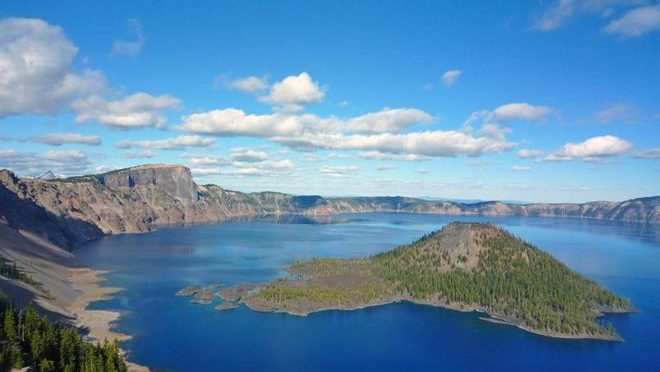He who spends a month, taken from June and July and transplanted into memory, at Klamath, can inhale an air uplifted above the common breathing space of mortals, for Klamath is breasted up high against the western wall of the Sierra, 4,600 feet above the level of the sea. The greater Klamath Lake has made its bed close under the mountain shadows, and on the east side is surrounded with grassy and wooded shores that seem as beautifully green as fields of Eden. The Indian reservation and the military post occupy this stretch of fairy land, and the occasional houses or tents of the harmless and not very degraded Klamath Indians are planted here and there, diversifying a landscape that needs a human touch now and then to make us feel at home, and not as trespassers on some demesne not owned by mortal kind.
Above the Upper Klamath Lake there lies a beautiful prairie about seven by twelve miles in extent, reaching from the lake to the mountains, around which the Sierra [sic] bends a kindly arm or spur that rolls boldly off to the east, and turns southward in a range of wooded hills, and so encloses the valley on all sides but one. Distant about five miles apart, the agency buildings and those of Fort Klamath occupy this plain–as lovely as sun ever shone upon, as fair as wind ever wandered over. Nowhere else for hundreds of miles along the eastern wall of the mountains is there found such a lovely land and such a romantic outlook, and, as if to place it beyond the reach of the invading hand of man as much as possible, it possesses a climate derived from its high elevation, that forbids to plow, and sow, and reap great harvests, and so leaves the green pastures for the grazing herds. During my summer months’ sojourn in Klamath Land, I drank in the pure mountain air and the clear running water with unmingled delight. At times our party galloped over these enfolded plains with the exhilaration of spirit that comes with wild life and wild ways. Sometimes a Klamath brave would challenge [us] to a trial of speed–for they ride like the wind–and often we made excursions here and there to the mountains, and to the adjoining valley of Sprague River, that gave us new vistas of beauty, new inspiration to bear away as remembrance of Klamath Land. It only needed the pen of romance to clothe these scenes with all the fancies of eastern story. Unfortunately the Indian women do not encourage the Arcadian idea, or fill the bill exactly as divinities whose presence charms the wilds. Even with the assistance lent by calico and cheap haberdashery in general, they fail to give tone to the naturalness of things, though it is sometimes worthwhile to see them galloping over the trails, and there is an occasional touch of beauty in red lip or flashing eye, but as a class, the aboriginal feminine is not romantic–naturally becoming the gatherer of roots and fruits, and the compiler of the very simple regimen of the wickiup, an establishment that is primitive in the extreme.


